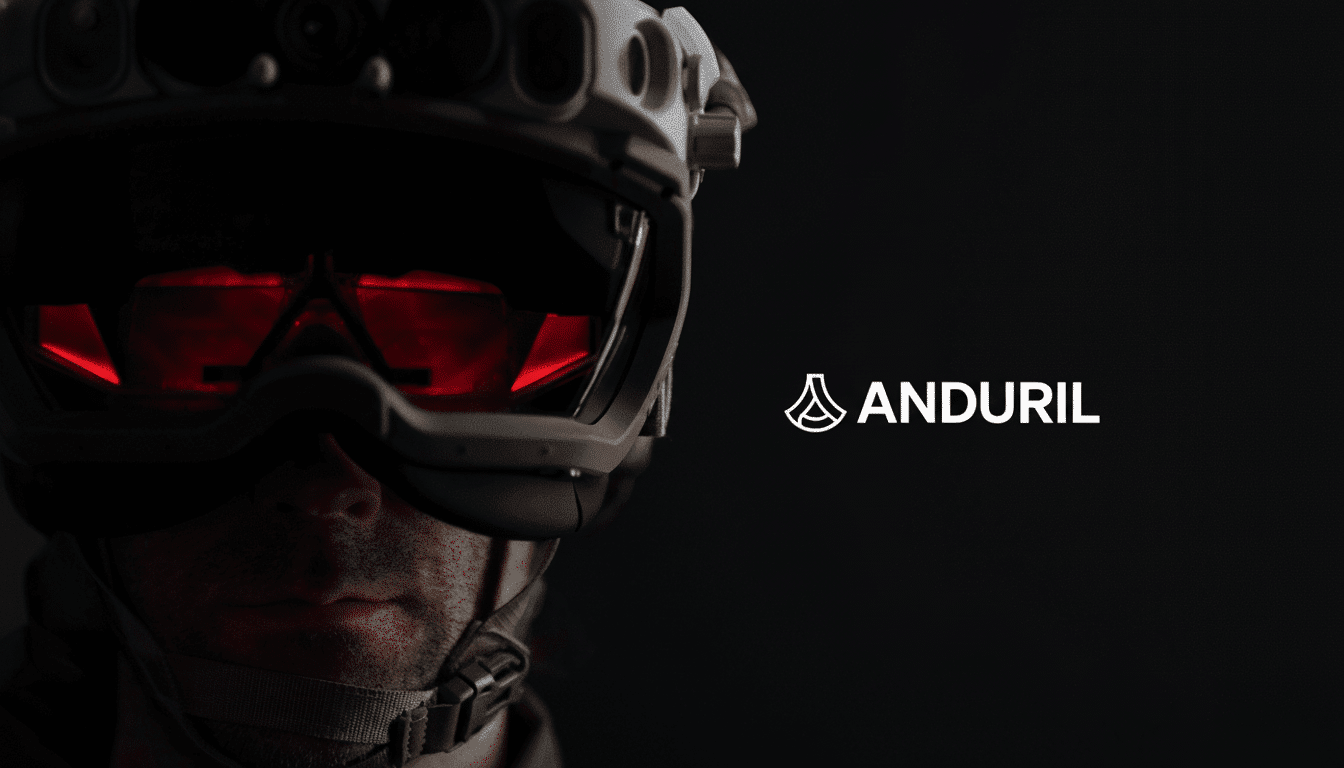Anduril has released EagleEye, a mixed reality system that soldiers themselves wear that mixes sensors, maps and AI into head-mountable displays — marking the loud comeback by founder Palmer Luckey to head-worn computing after his Oculus past.
The agenda is straightforward, if ambitious: to make squad-level use of commanders’ tools like Call for Fire a reality, in real time and without making soldiers look down at a tablet or radio.

Returning to Head-Worn Computing for Frontline Soldiers
Luckey has long maintained that the bottleneck in defense isn’t sensors or data volume, but instead the human interface. Anduril’s main product, the Lattice command-and-control system, already ingests feeds from drones and towers — interceptors on the border aren’t out of its sight either. EagleEye takes that software stack down to the individual soldier, treating the helmet as a compute node rather than a passive mount for night-vision goggles.
A few years ago, challenging entrenched players like Microsoft and Magic Leap would have been a losing fight. The market has shifted. The U.S. Army expanded its supplier base after difficulties with previous headsets, and Anduril has evolved from a start-up to a prime contractor with an integrated hardware-software strategy and a pipeline of fielded systems.
What EagleEye Aims to Do for Squad-Level Units
Anduril says the EagleEye is a modular family of systems: a full helmet visor for immersive heads-up display, a lower-profile shield for patrol, and lightweight glasses for training and admin tasks. All versions will run Lattice, which shows waypoints, friendly positions and threat notifications directly on the world instead of a flat map.
The company says the helmet includes rear and side sensors to alert users to unseen movement, pulls live video from squad drones and unattended ground sensors and tracks teammates in real time. In a typical urban breach, for example, a soldier might look left to see a heat signature on video coming from inside of a door; swivel toward an overhead drone feed over the roofline; and simultaneously receive recommendations about which routes to take with common lines of sight that would cut down exposure.
For adoption, three measures of impact matter: weight, power and latency. The Army’s standard load is already heavy, and anything more cumbersome than generic night-vision systems will not fly. EagleEye is aimed at meeting NVG-like weight requirements with hot-swappable batteries attached in order to balance the helmet, and sub-20 ms motion-to-photon latency to minimize motion sickness — thresholds that are broadly accepted by human factors researchers at the Army Research Laboratory.
Why the Army Is Listening to Mixed Reality Systems

With that backdrop, Anduril was selected as a lead integrator and eventually won a $159 million award to prototype a new soldier-worn mixed reality capability under the broader Soldier Borne Mission Command effort. It’s billed as the biggest push yet to put AI-enabled situational awareness on every warfighter, a shift that would take MR from a niche training tool to the primary battle interface.
Operational trials will be the real test: Can teams work faster, make fewer mistakes and retain awareness of what is going on when under stress? Evaluators at the Army Test and Evaluation Command have been looking more at missions than gimmickry, measuring things like target detection rate, time to find friendly forces and rates of simulator sickness. If EagleEye gets past those with solid soldier feedback, procurement momentum will come too.
Partnerships and the Optics Supply Chain for EagleEye
Earlier this year, Anduril announced a partnership with Meta for work on extended-reality products in what is itself an unlikely reunion for Luckey. The calculus is straightforward: Meta brings volume production, optical experience and silicon relationships; Anduril brings military requirements, ruggedized software and integration with radios, sensors and tactical networks like Nett Warrior.
Defense MR is not just software polish. It’s waveguide yield rates, microdisplay sourcing, thermal management and electromagnetic compatibility. Supply chain resilience and ITAR compliance are high on the agenda. Varjo has been thriving in pilot training, Magic Leap has gained traction with enterprise and special operations training and Microsoft is iterating on IVAS. EagleEye will compete based on ruggedization, integration breadth and the ability to maintain a cost per unit that meets Army constraints while meeting ballistic and environmental requirements.
How Success Will Be Measured in Army Field Trials
Here are some data points to keep an eye out for in testing prototypes as they progress through development:
- Average mission battery life while radios and video streaming are active
- Wide enough horizontal field of view to avoid tunnel vision
- Sub-2 kg weight on the helmet system, including mounts
- End-to-end cybersecurity hardening across the Lattice stack and soldier radios such as the AN/PRC-163
There’s also the human side. Studies by RAND and the Army Research Laboratory found that overlay clutter in the form of too many icons on an iPad, for instance, and “alert fatigue” might hurt performance. The winning systems will then adaptively filter information, prioritize it based on mission phase and let squad leaders set thresholds without digging through menus. If EagleEye’s AI can really lighten the cognitive load with better speed and accuracy, it will cross the acceptance chasm that dogged previous headsets.
EagleEye, for Luckey, is a full-circle finger-wagging — comparing lessons learned in the field of consumer VR and applying it to an area where milliseconds or grams or watts win tournaments. For the Army, it’s an opportunity to bring mixed reality out of the lab and into standard kit. The next stage of field trials will determine if this visor becomes the soldier’s new default screen.

